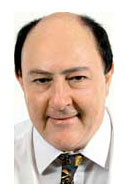
As digital manufacturing technology pushes its way further towards the production floor, additive manufacturing (3D printing) is emerging as a viable option to complement the more traditional methods of serial production. In an environment of global warming, energy scarcity and dwindling resources, additive manufacturing offers producers an alternative way to eliminate the waste we usually associate with volume production based on a subtractive approach – machining a lump of metal, for instance.

Futuristically, the benefits extend even further along the supply chain, since it’s been predicted that as the cost of 3D printers and materials comes down, certain parts will be cheaper to manufacture closer to, or even at, the point of consumption. In auto repair shops, for example, the need to hold stock of spare parts would be reduced if these could be printed on the premises, as and when they are required. Unfortunately ideals like this are still some way off, at least until we have quality control procedures in place to ensure that any relevant standards are upheld, particularly where things like vehicle safety are involved.
So where is additive manufacturing really at? For the moment, the answer is very much tied to the application. For instance, it is already quite common to use 3D printing to produce the jigs and fixtures needed for traditional mass production, but producing the parts themselves is still better done using techniques like plastic injection moulding, say.
For the time being, 3D printing is proving its value in volume production of parts where the geometry is too complex to allow mass production any other way. For example, Adidas turned to 3D printing when it wanted to produce an advanced sole for one of its latest sneaker designs. While the pattern was too complex to produce cost-effectively using traditional manufacturing methods, Adidas was able to turn out 200 000 soles in a short timeframe using a printing technique based on the use of photopolymer resins that solidify under the influence of a specific type of light source. For the Adidas wearer, the printed
sole provides more comfort and flexibility through its advanced lattice structure, which responds to individual movements. By contrast though, a producer of plastic flower pots is unlikely to find competitive advantage through the use of such advanced photopolymers, just at the moment.
What seems likely to happen then is that 3D printing will evolve through an era of ‘hybrid’ manufacturing techniques, rather than any kind of sharp and clear-cut transition to additive manufacturing. As more companies begin to produce printed parts in greater volumes, so the price points for additive technology and materials will continue to drop. Moreover, as printing techniques evolve and repeatability becomes easily achievable to the levels required for efficient quality control, the range of potential uses for 3D printing in mass production applications will expand. The ARC Advisory Group’s Dick Slansky takes a detailed look at how this seems set to play out in the medium term, and some of the key technology drivers along the way. See the article http://www.instrumentation.co.za/12620r for more details.
| Tel: | +27 11 543 5800 |
| Email: | [email protected] |
| www: | www.technews.co.za |
| Articles: | More information and articles about Technews Publishing (SA Instrumentation & Control) |

© Technews Publishing (Pty) Ltd | All Rights Reserved